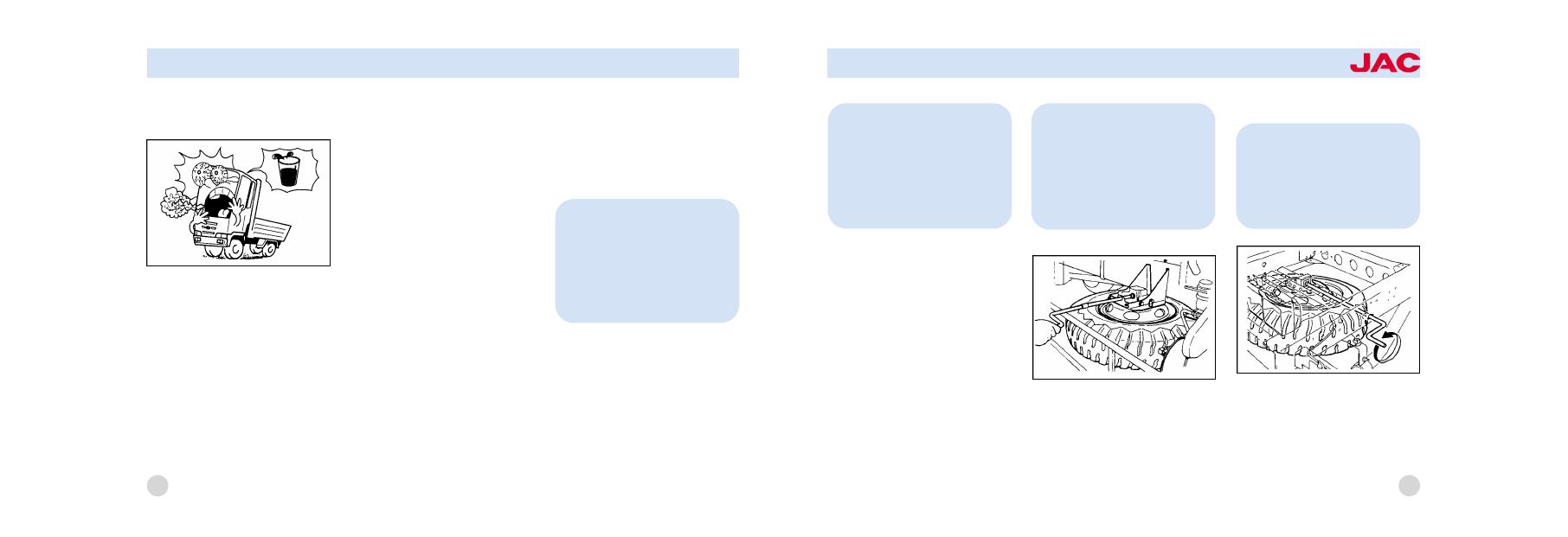JAC Trucks. Manual - part 139

your JAC dealer.
IF THE ENGINE OVERHEATS
If your temperature gauge indi鄄
cates overheating, you experience
a loss of power, or hear loud ping鄄
ing or knocking , the engine is
probably too hot. If this happens,
you should:
1. Pull off the road and stop as
soon as it is safe to do so.
2. Place the gear selector lever in
neutral and set the parking brake.
If the air conditioner is on, turn it
off.
3. If coolant is running out under
the vehicle or steam is coming
out from the cap, stop the engine.
Do not open the cap until the
coolant has stopped running or the
steaming has stopped. If there is
no visible loss of coolant and no
steam, leave the engine running
and check to be sure the engine
cooling fan is
operating. If the
fan is not running, turn the engine
off.
4. Check to see if the water pump
drive belt is
missing. If it is not
missing, check to see that it is
tight. If the drive belt seems to be
satisfactory, check for coolant leak鄄
ing from the radiator, hoses or un鄄
der the vehicle. (If the air condi鄄
tioner had been in use, it is
nor鄄
mal for cold water to be draining
from it when you stop).
5. If the water pump drive belt is
broken or coolant is leaking out,
stop the engine immediately and
call the nearest JAC dealer for as鄄
sistance.
70
WARNING:
While the engine is running,
keep hands, long hair and
clothing away from moving
parts such as the fan and drive
belts to prevent injury.
IN CASE OF EMERGENCY
NOTE:
While lifting the tire, check to
ensure that the chain is not
twisted and that the hanging
plate is not displaced.
CAUTION:
Serious loss of coolant indi鄄
cates there is a leak in the
cooling system and this should
be checked as soon as possi鄄
ble by a JAC dealer.
6. If you cannot find the cause of
the overheating, wait until the en鄄
gine temperature has returned to
normal. Then, if coolant has been
lost, carefully remove the radiator
cap and add water to bring the flu鄄
id level in the reservoir up to the
halfway mark.
7. Proceed with caution, keeping
alert for further signs of overheat鄄
ing. If overheating happens again,
call a JAC dealer for assistance.
SPARE TIRE
1. To install a tire, face the convex
side of wheel upward, put the
hanging plate in the disc wheel,
and rotate the spare tire carrier
handle clockwise to lift the tire.
2. Check to ensure that the tire has
been firmly secured.
71
WARNING:
Do not remove the radiator cap
when the engine is hot. This
may allow coolant to be blown
out of the opening and cause
serious burns.